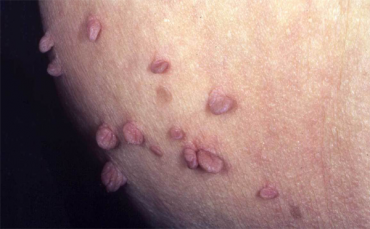
The causes of genital warts are primarily hereditary. HPV is highly contagious. You can get infected with this virus through sexual contact or by sharing towels or clothing. This condition typically appears in two weeks to eight months. However, it can appear in any part of the body. The only way to prevent it is to see a healthcare provider. If you have genital warts, you should be sure to inform your partner about the problem.
There are several causes of genital warts. The HPV virus is the culprit. There are over 100 strains of HPV, and over 40 of them can affect the genital area. The virus is spread through sexual contact and can be transmitted to another person. It doesn’t have to be visible to spread the disease. People suffering from this infection can have them on both sexes. It is not recommended that you have sex with someone who has genital warts.
HPV infection is the main cause of genital warts. It causes tiny flesh-coloured bumps or pale cauliflower-like structures, which can be hard or soft. These warts can appear on the vagina, in the anus, or anywhere else on the body. It is infectious and can be passed on to others. There are several types of HPV. The type of HPV you have will determine whether you develop genital warts.
There are several treatments for genital warts. The most common is avoiding sex altogether. This is usually achieved by having sex with a partner who does not have the HPV virus. Although condoms can help you avoid HPV, they cannot protect you from the disease completely. You can also get the HPV vaccine. The vaccine protects against two subtypes of HPV, including the one that causes genital warts.
Infection with the virus is the most common cause of genital warts. It is a sexually transmitted disease that can affect anyone. It is possible to have several different kinds of HPV. There are several different types of warts, including those on the penile shaft and the scrotum. Some of these warts can be small and flesh-coloured, or cauliflower-like. The most common type of warts are usually found on the genital area, but can spread to other parts of the body.
The most common genital warts are flat, raised, and cauliflower-shaped. The healthcare provider will be able to diagnose them by looking at the genital area. Women with a high HPV infection should get regular Pap tests. If they develop a wart on their vaginal wall, it can interfere with stretching of the tissues during childbirth. If the warts are large, the vulva can bleed during delivery.
The human papillomavirus is a viral infection that causes genital warts. There are 40 different types of HSV, and each strain affects the body differently. This virus can be spread from person to person through skin-to-skin contact. Many people who have warts are sexually active, and it is possible to contract the virus from multiple partners. It takes months or years for a wart to develop, but it can happen after a few days of sexual activity.
A weak immune system is another factor that increases the risk of developing the virus. Other factors such as smoking, unprotected sex, and having multiple children increase the risk. You should not be sexually active when you have genital warts. The infection may not show symptoms for several weeks or even months. In most cases, warts are small, flesh-colored, and confined to the vagina. An outbreak can be painful, so it’s important to see a doctor and health site immediately Kopertis10.
A woman with genital warts is at risk of developing cervical cancer if she is infected with certain strains of HPV. The HPV strains that cause genital warts are generally low risk, which means they will eventually go away. During this time, the virus will remain in the skin cells. Men who do not have visible genital warts are at risk of infection from sexual partners.